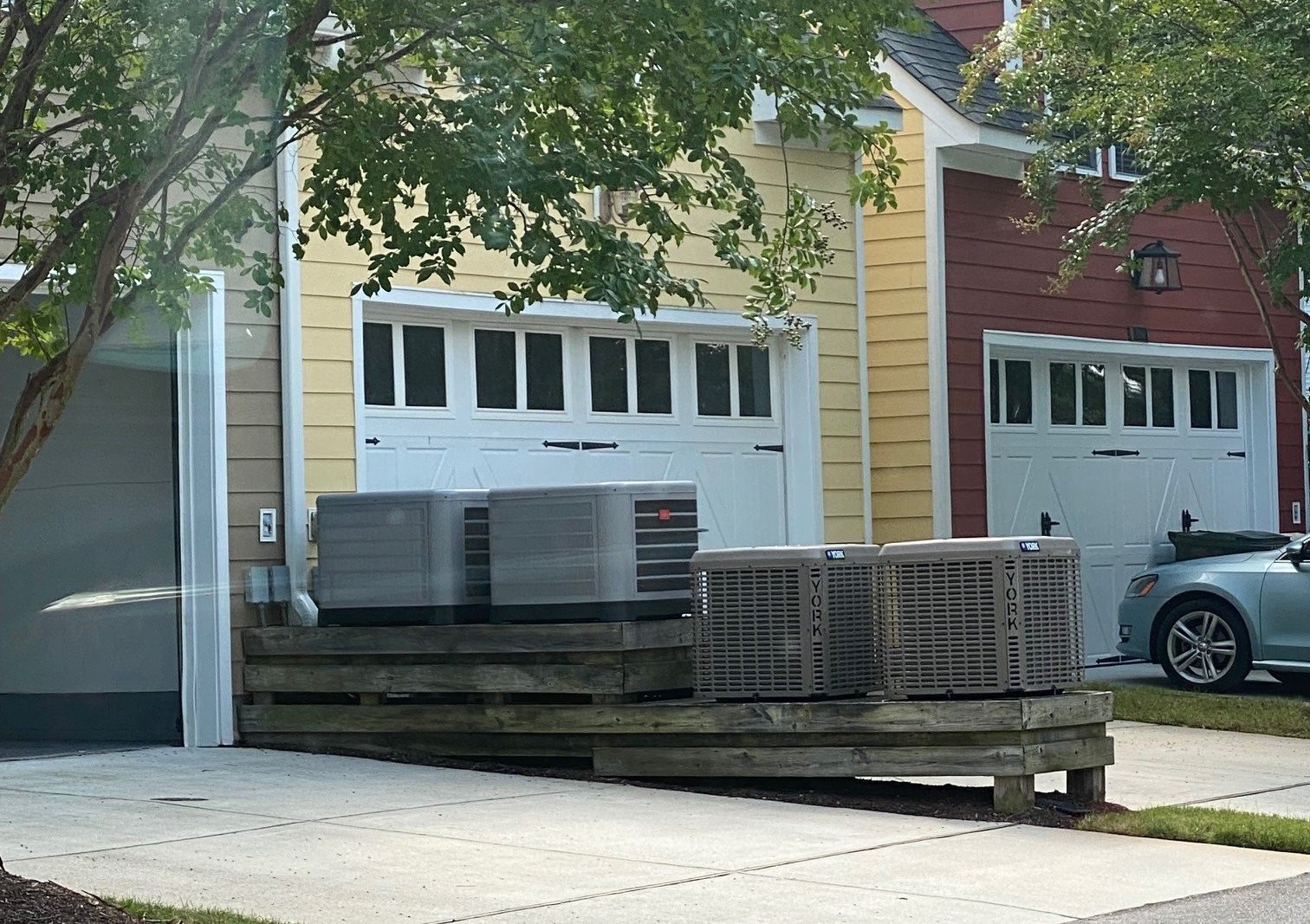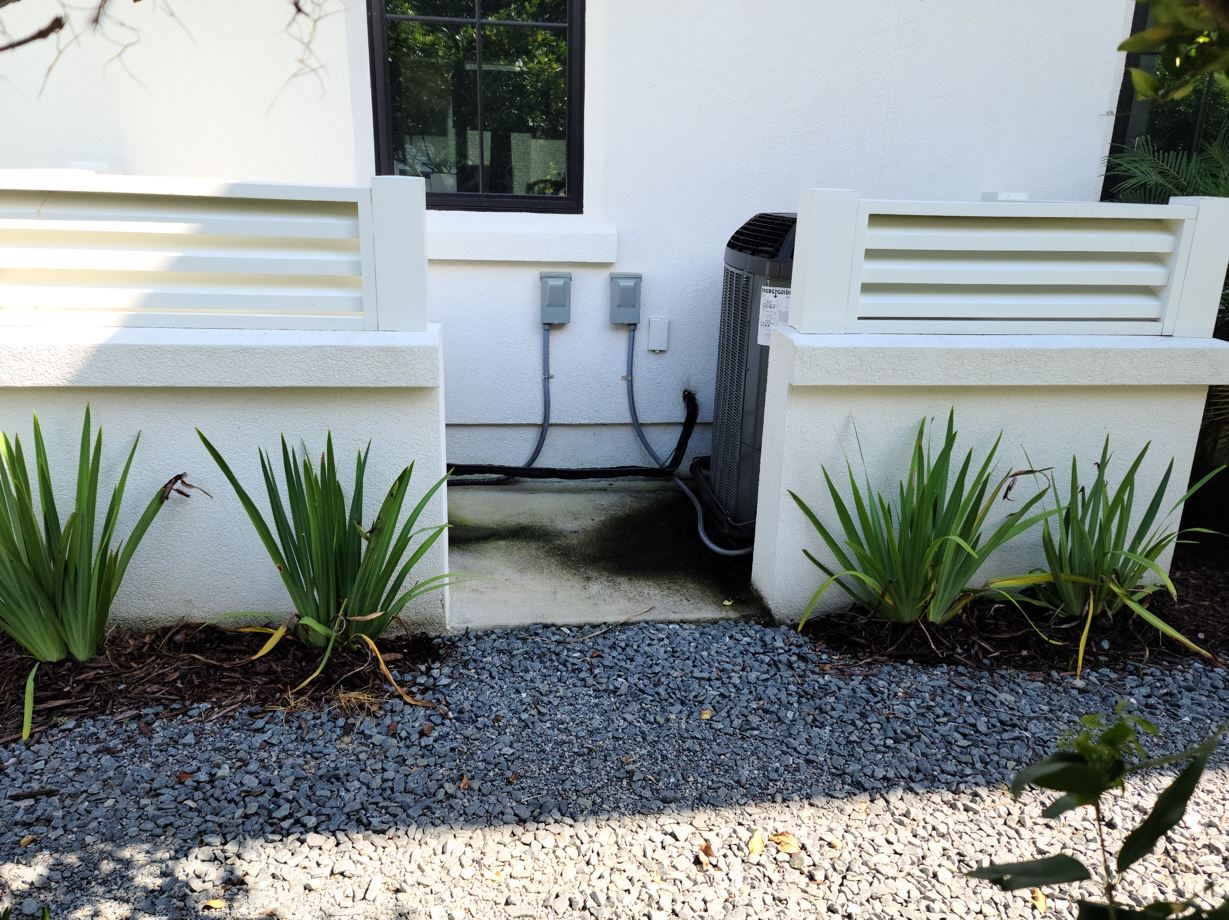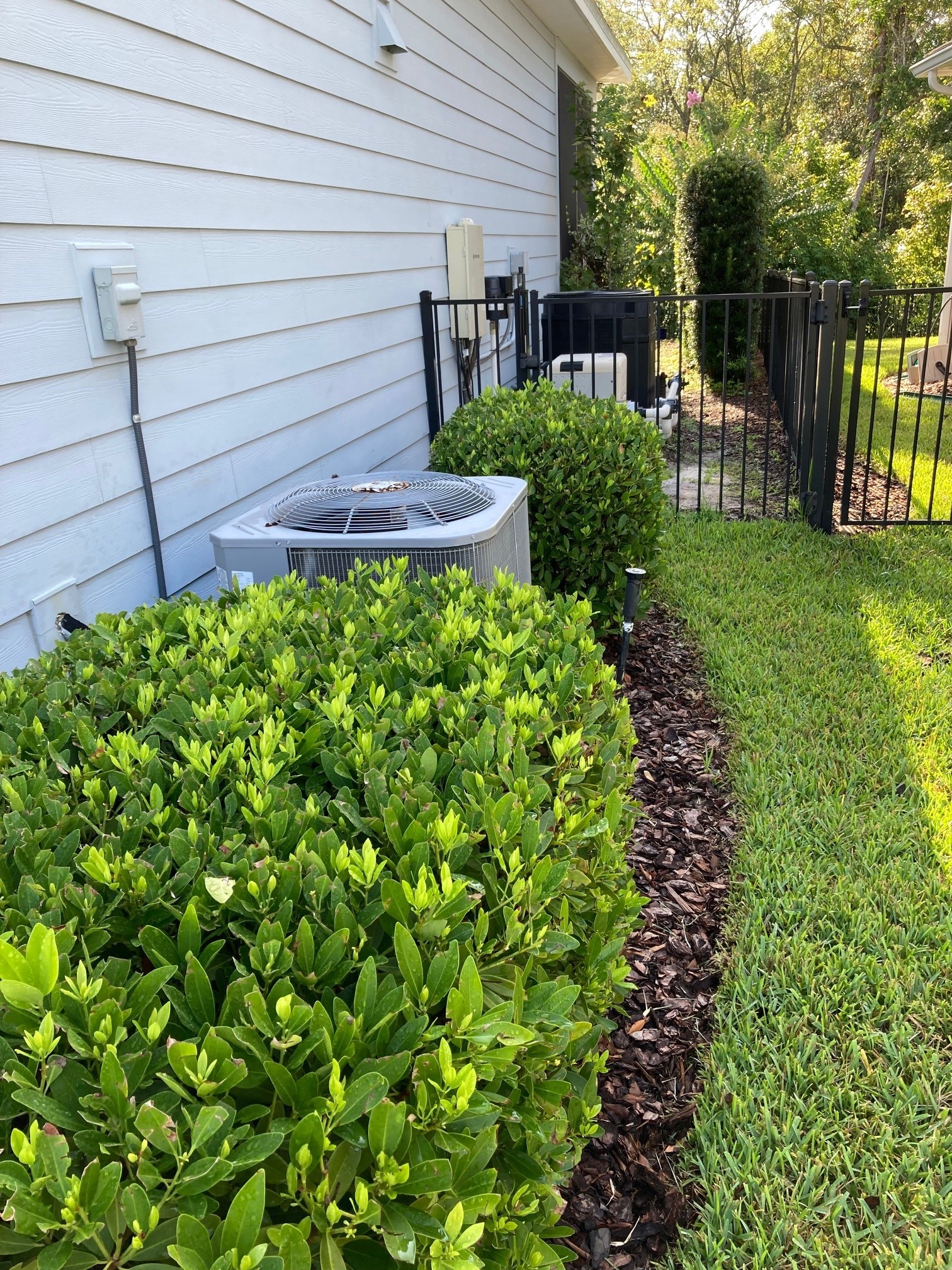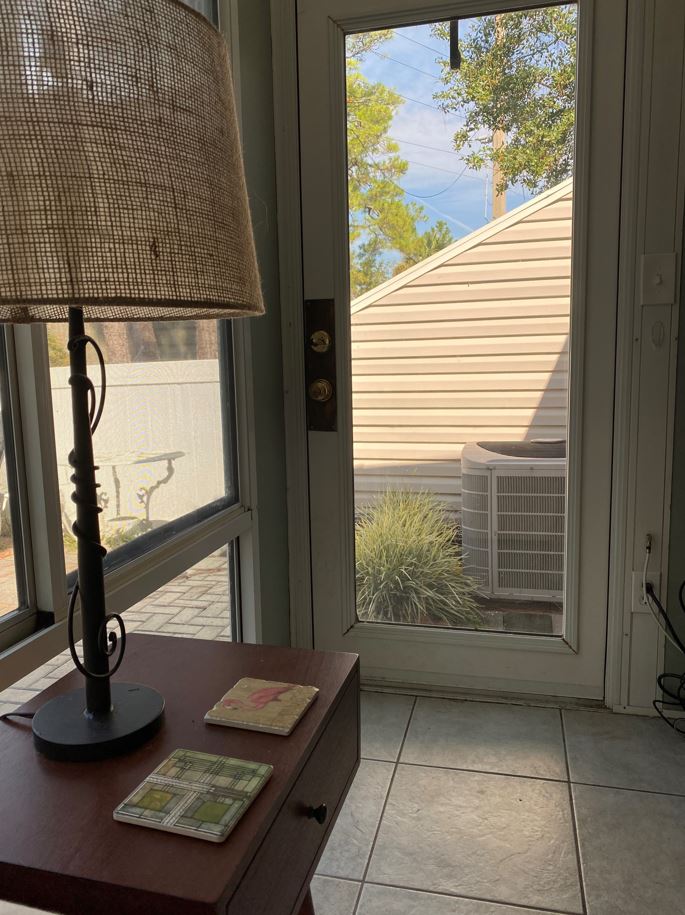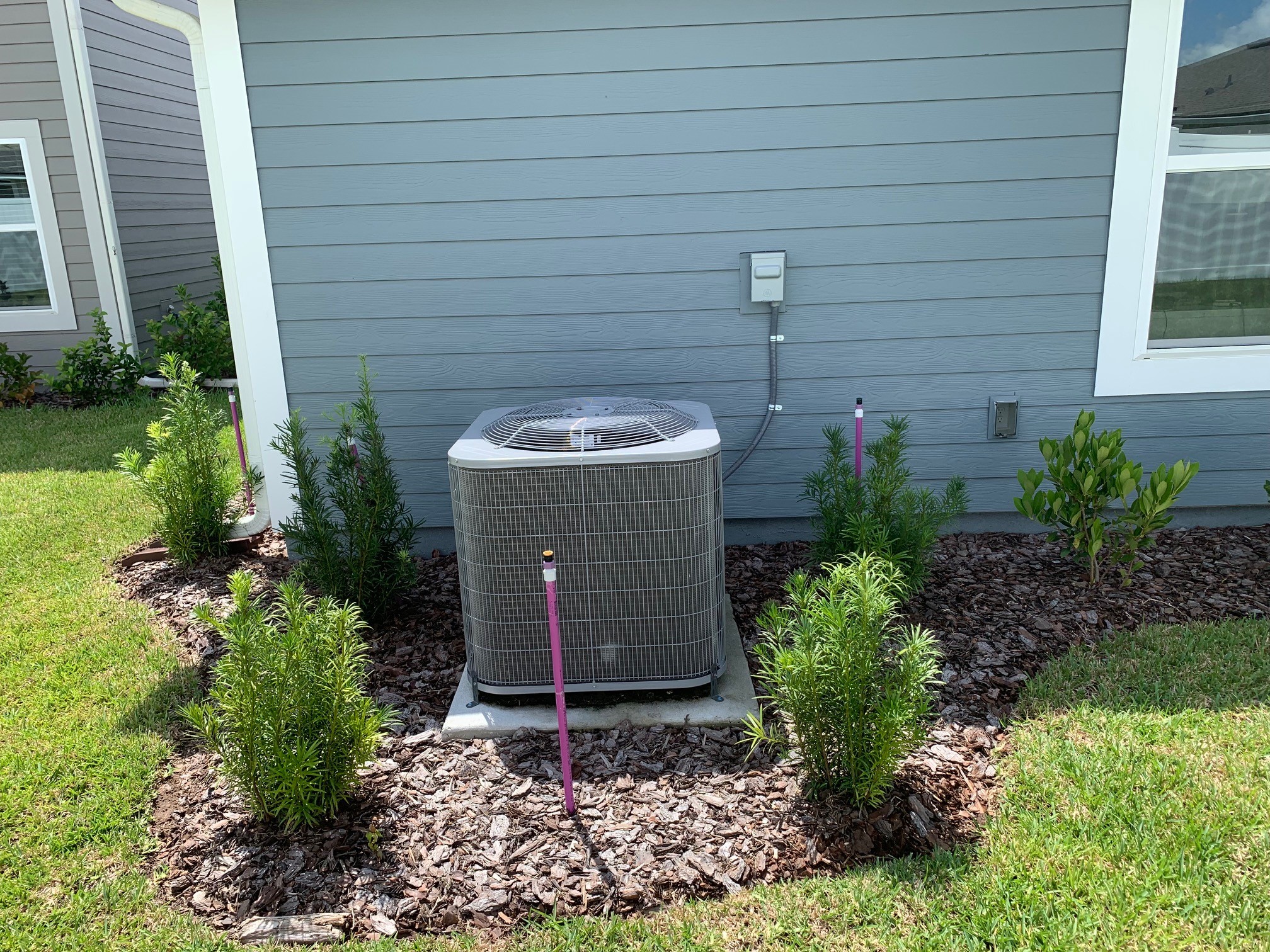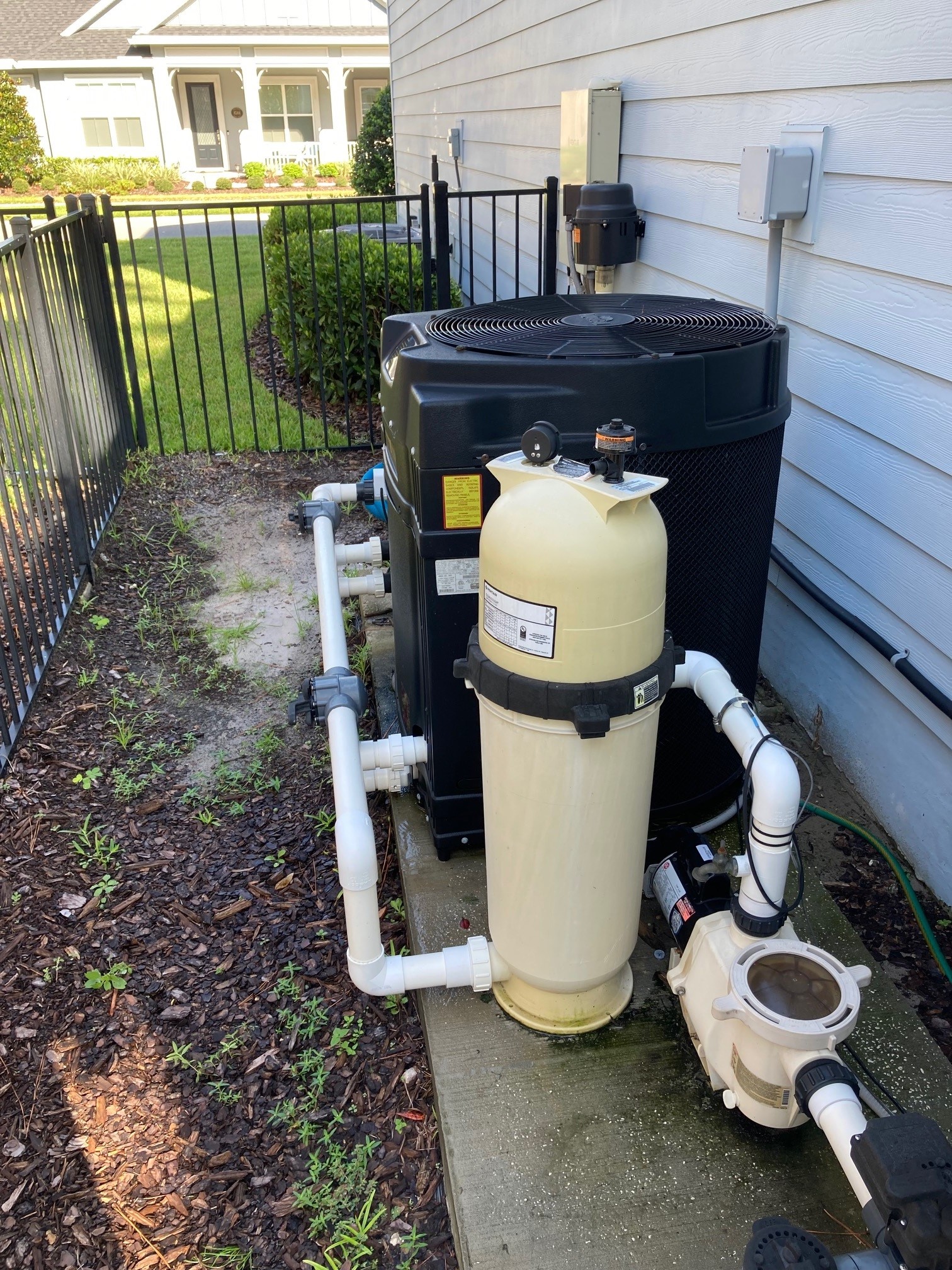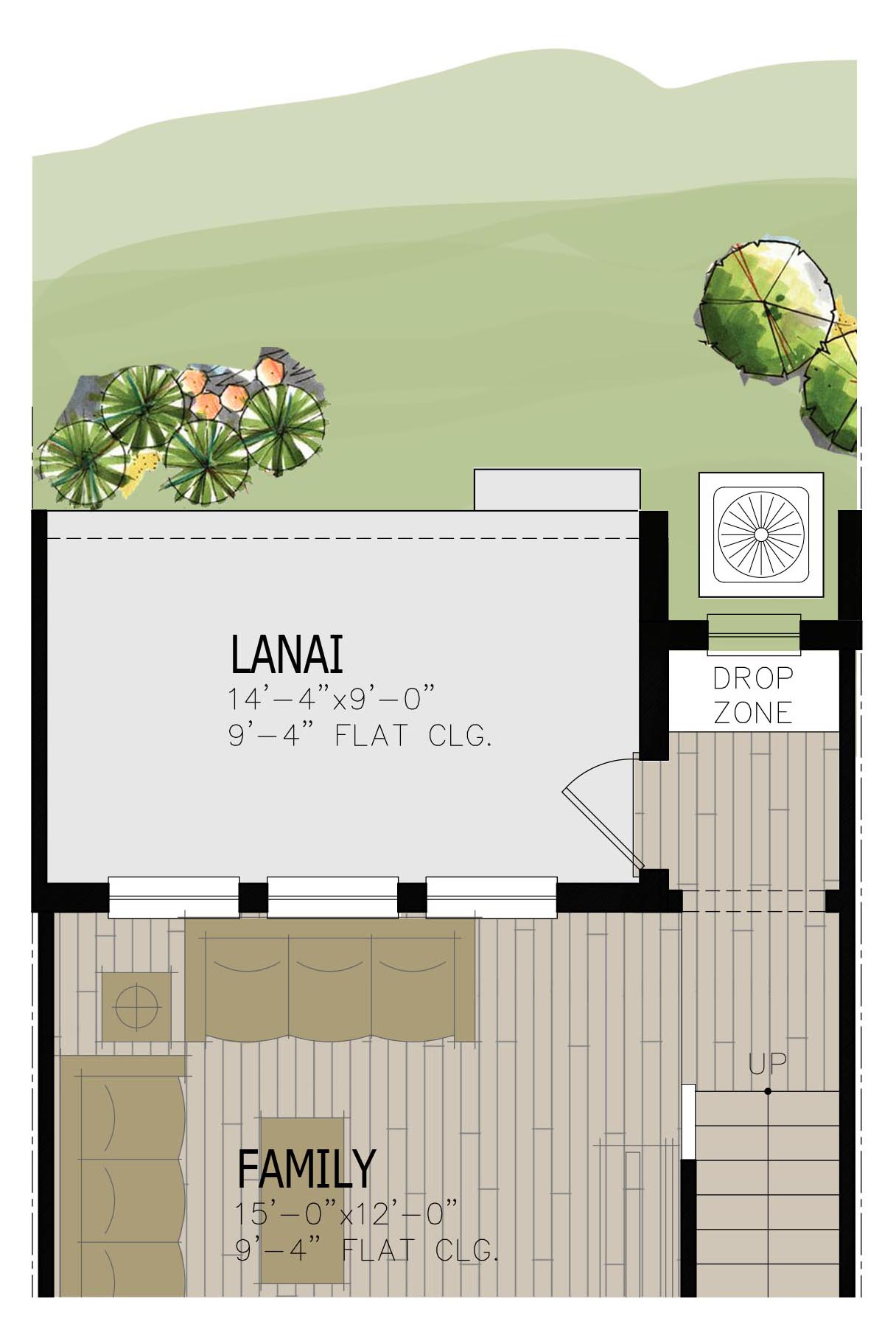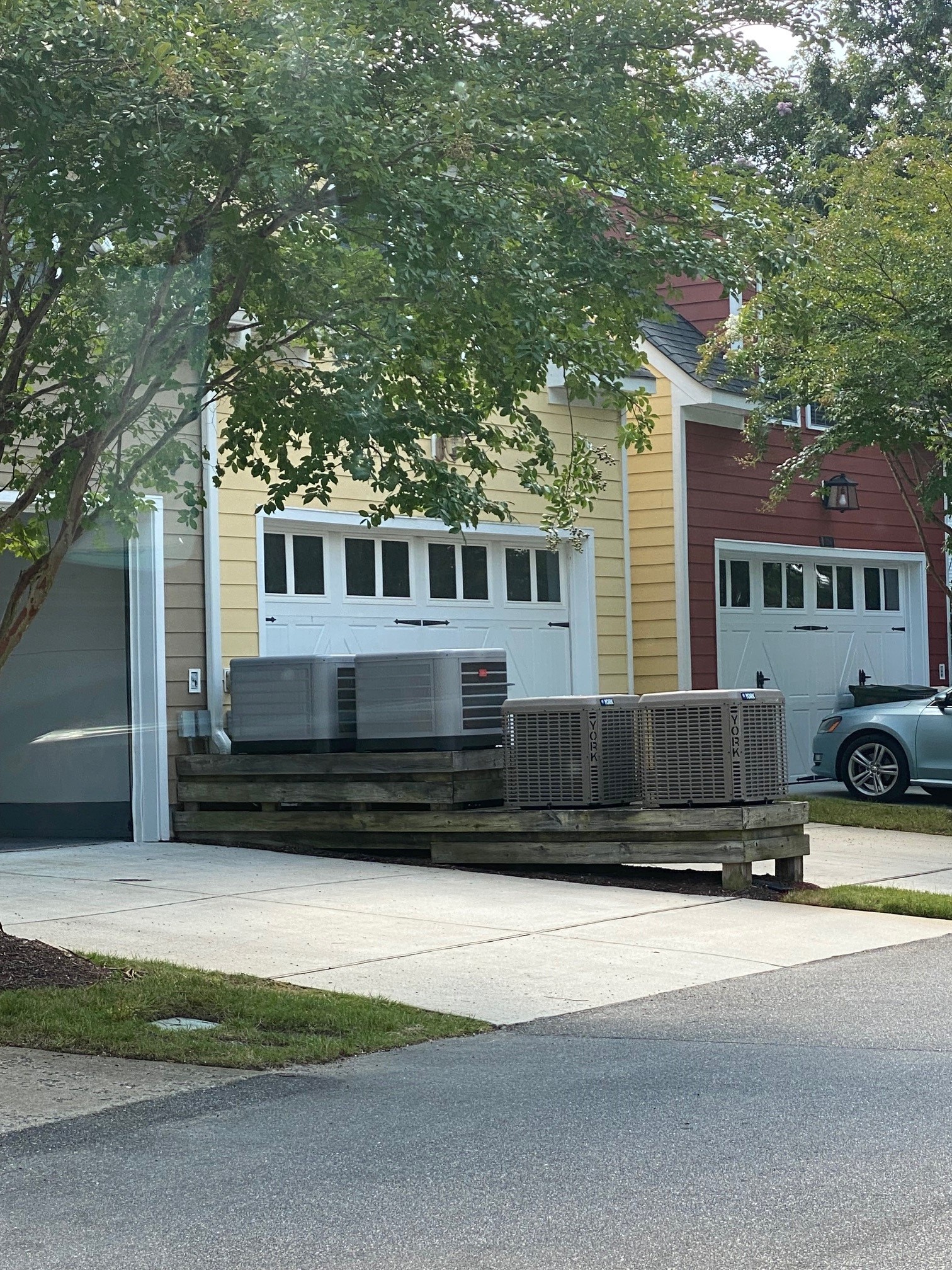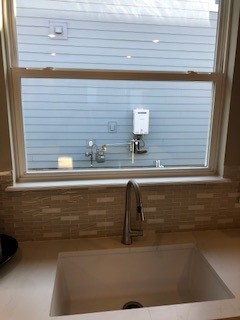As designers, we spend a lot of time making sure our plans feel amazing – loaded with all the latest trends and lifestyle options. But before we can say the design is done, we must make sure the mechanicals work, both inside and outside. Having heat, air conditioning, and hot water is important to our buyers, but as lots continue to shrink in the name of density, placement of the mechanicals can require creative thinking.
Inside
In Florida, that means finding room for an interior location for the air handler, typically 3’ by 5’. Then depending on the square footage and the number of floors, we may end up with two a/c closets. In other locations, the units end up in the attic or basement, requiring chases. Of course, it gets harder to carve room for units and chases in smaller homes and attached product.
Then there’s the water heater. Is it in the garage or basement? If it’s gas, we will need a flue or have it direct vented to an outside wall. We avoid putting water heaters in the attic since no one wants to look up at a wet ceiling or worse, a waterfall. On-demand water heaters are awesome because you never run out of hot water, and they take up less space.
Outside: The Big Stuff
With every inside air handling unit comes an outside unit. When side yards were 7.5’, we would locate those along the side of the house. Naturally, we would have to screen them from the street which we could do with a half wall or landscaping.
But with 5’ side yard or smaller, we are no longer able to put them on the side – unless we indent the house.
Instead, these units end up on the back of the house. Perfect for adding ambience to your backyard living as you listen to your unit (or your neighbor’s unit) turn off and on – not! And how does it look? Can you see it from inside the home? Nothing is more alarming than seeing your air handler from your owner’s suite sitting area.
Furthermore, investment of those six-foot-tall windows is lost when you only end up seeing the top of your a/c unit. Then there’s the noise of the unit. Perhaps you can get used to the sound, but the on and off is what some find most disturbing.
Let’s not forget the pool equipment. Between the filter and the heater, they look like chemical treatment plants – which I guess they are. It’s hard enough to squeeze in pools with smaller lots, now you must include and screen this eye sore.
The narrower the product, the harder it becomes to have ample light with windows to the private backyard without staring at your unit. It is challenging enough in single-family, but multi-family is especially tough. Builders and developers want density to reduce their land cost. There are right ways and there are wrong ways to manage the mechanicals. We recently designed 20’ wide, alley loaded townhomes. In this example, there was a private outdoor space between the unit and the garage. As designers, we know how important it is capture as much natural light for attached product – especially for the inside units, so we packed the rear with windows and a wonderful covered outdoor living. As for the condenser, we created a pocket where the unit could be recessed and hidden from view.
This might all sound fairly intuitive, so let me provide an example gone wrong. A client recently sent me photos of an alley-loaded project where not as much care was taken with the placement of the condenser units. To make matters worse, each townhome had two units; one for each floor. You have to love the platform. We’re guessing the developer didn’t want the residents to park in the driveways because you couldn’t open the doors of the car without hitting the equipment.
Outside: The Little Stuff
In Florida, the weather is warm enough to mount your on-demand water heater outside. In this case, it was on the side of the house – directly across from the kitchen window. Nice…
Taking care of the mechanicals inside and out is not only important for the comfort of your buyers but also the aesthetics of the home and community. It may not be the sexy thing to blog about, but it can go oh so wrong if you’re not planning ahead.
Categorized in: Exterior Styles
This post was written by Housing Design Matters


